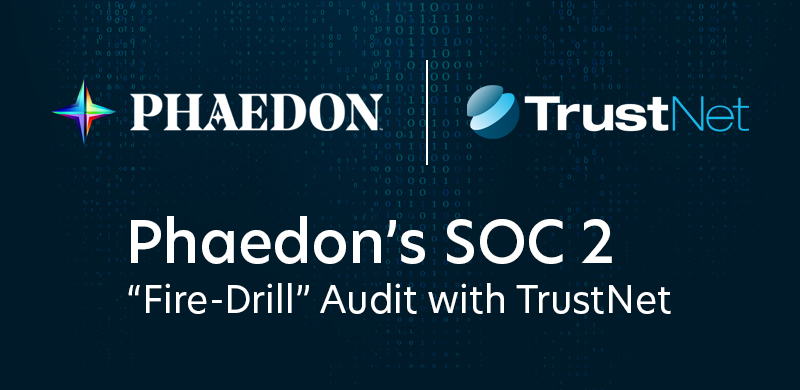Blog Gaining a Panoramic View of Cyber Risks: Internal, External, and Independent Ratings
Gaining a Panoramic View of Cyber Risks: Internal, External, and Independent Ratings

Cyber risks have become broader and more severe that businesses can no longer afford to get blindsided. With every form of cyberattack coming in from every side and at any time, only a panoramic view of a company’s threat environment — and a proactive approach to mitigation — can save it from catastrophic events such as data breaches, operational disruptions, and ransomware attacks.
This is neither theoretical, an exaggeration, nor a scare tactic. Organizations experience a global average of 1258 attacks per week according to Checkpoint. Statista reported that at some point in 2021, attacks on enterprises succeeded around 12% of the time. While IBM crunched real-world data to quantify how much a data breach really costs: US$4.45 million on average in 2023. Bank accounts did dwindle. Operations did stop. And heads did roll.
The question is: how should businesses adapt?
Cyber criminals will exploit any vulnerability in your information systems regardless of where it resides: from your endpoint devices on site to your apps on the cloud. Because threats can come from any direction, a panoramic view of your risk profile is the smartest place to start. That entails understanding your cyber risks from multiple perspectives: internal assessments, external indicators of your resilience, and independent third-party ratings.
Understanding Cyber Risks, Threats, and Vulnerabilities
Cyber risk refers to the potential harm an individual or organization is exposed to that can be caused by a cyber threat. Cyber threats are malicious acts or attempts that seek to compromise information systems, typically by exploiting a vulnerability. Vulnerabilities are flaws and weaknesses in systems and processes such as software bugs, human errors, and incorrect system configuration.
Types of Cyber Risks
Cyber risks can be classified into two main categories: internal and external. Internal cyber risks originate from within an organization while external risks come from outside. Both types of risks can have a significant impact on the company’s operation, finances, and reputation.
- Internal Cyber Risks — These refer to potential harm stemming from human errors, malicious insiders such as a disgruntled employee, ageing hardware and software, and inadequate policies and procedures.
- External Cyber Risks — These refer to potential harm that originates from outside the company such as malicious hacker activities, state-sponsored threat actors, and natural disasters.
One of the best ways to assess and manage these two types of risks is to use independent risk ratings. Independent risk ratings are third-party assigned scores that measure how well an organization handles cyber risk based on various criteria and performance indicators.
Why You Need a Panoramic View of Cyber Risks
Businesses adopt new practices and technologies that introduce new vulnerabilities in their systems. The more these businesses connect with each other, the more vulnerable entire supply chains become. The more vulnerabilities there are to exploit, the more chances threat actors get at breaching networks and compromising sensitive data.
As these criminal hackers refine their tools and tactics over time, cyberattacks grow more sophisticated, deal more damage, and target just about any element in your information system that shows any hint of weakness: data servers, websites, remote staff, and third-party services.
All these lead to a set of complex cyber risks that come from every direction. The only way you can adequately manage and mitigate these risks is to implement a continuous panoramic perspective of your cyber threat environment. That entails a 360-degree awareness and an objective understanding of the full spectrum of cyber risks — including those that are technical, organizational, behavioral, and environmental.
A panoramic view of cyber risks enables organizations to proactively adapt to their threat environment and improve resilience. They can take more effective actions and make smarter decisions:
- identify and prioritize vulnerabilities that impact their most critical assets
- allocate resources more cost-efficiently
- invest in security solutions that work as expected
- implement appropriate controls and effective measures
- quickly respond to and recover from security incidents
Inside, Outside, and Independent Ratings
Building a 360-degree understanding of cyber risks involves gathering and analyzing insights generated by three types of risk ratings: inside, outside, and independent.
- Inside ratings are based on the organization’s own assessment of its cyber risks, using internal data and metrics.
- Outside ratings are based on the assessment of external parties. These ratings represent how external stakeholders such as customers, suppliers, regulators, or industry peers view your security performance. These ratings can be gleaned from customer review platforms, vendor recommendations, articles or reports that mention your company, regulatory inspections, and even dark web hacker forums where indications of intent or compromise provide a window into a potential breach or planned attack that involves your company.
- Independent ratings are based on the assessment of third-party experts, such as certified auditors, security consultants, or rating agencies. Comparatively more formal and precise than other types, independent ratings offer an objective and unbiased evaluation of an organization’s cyber risks.
All Three in One: iTrust Cyber Risk Ratings
A panoramic view of your cyber risks helps deliver business benefits that go beyond just safeguarding your customers and digital assets. But there’s a caveat. Gathering, curating, and analyzing data from all three types of cyber risk ratings can be complicated, tedious, and resource intensive if you do it on your own.
A cost-effective way to achieve the same outcomes is to include the monumental task as part of a managed security service. That way, you delegate the heavy lifting required to establish 360-degree risk visibility to a reliable security and compliance provider like TrustNet. With decades of industry experience, TrustNet actively participates in crowd-sourced threat intelligence platforms; provides 24/7/365 security monitoring and risk mitigation services; and has the required industry accreditations to perform independent audits and issue certifications.
Some companies prefer stand-alone solutions over managed security. For these organizations, the iTrust Cyber Risk Ratings service can be the fast and cost-effective solution they need.
The iTrust Cyber Risk Ratings service is a next-gen platform that enables a panoramic view into your cybersecurity and compliance risks. The platform incorporates many useful functions such as continuous risk assessment, automated compliance tracking, hacker threat analysis, and breach monitoring. To calculate risk rating scores for every critical component of your network, the platform actively scans inside, outside, and independent ratings — including crowdsource reputation ratings and chatter on underground hacker sites.
Conclusion
Cyber criminals will relentlessly target any point in your IT infrastructure where a vulnerability exists. From your data servers on site to your web services on the cloud, nothing is adequately protected from malicious attacks — unless you intentionally make it so.
However, that level of security requires full awareness of the entire attack surface, made possible only through a panoramic view of your cyber risks, all-day long and all-year round.
The combined insights from internal, external, and independent ratings can give you the leverage you need to proactively mitigate threats in advance instead of just reacting to them as they occur and deal damage.
You can gather and analyze these ratings separately. Or you can use iTrust.
Being smart in how you manage risk and secure your business can make a whole lot of difference.




